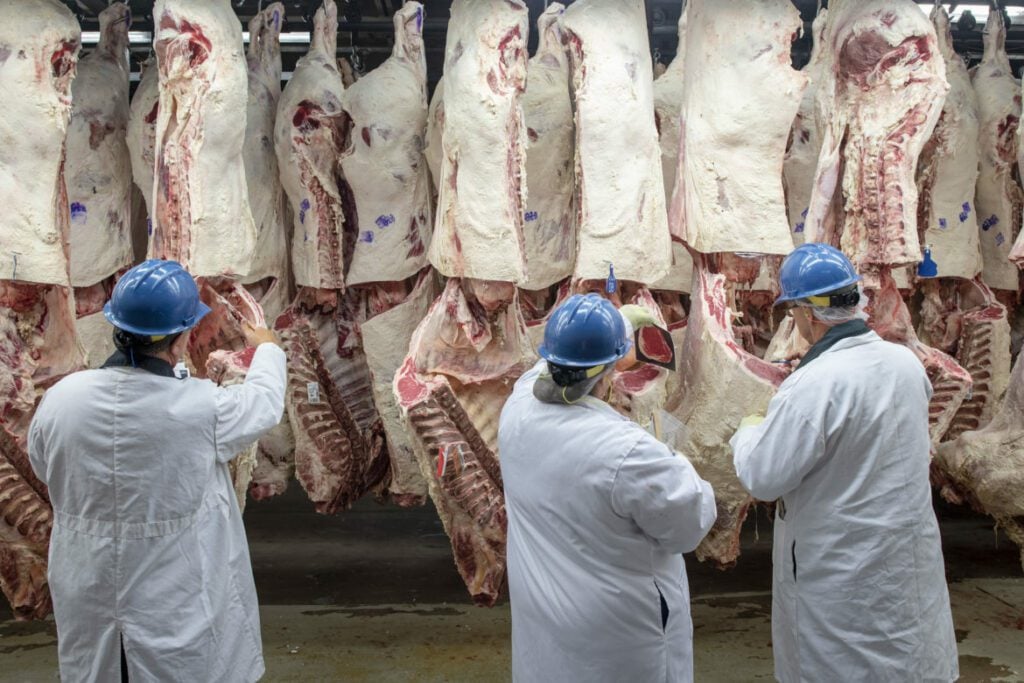In 2020, there were 340 million workplace accidents in the United States alone. In addition to this, about 160 million people in the workforce are affected by work-related illnesses. But the meatpacking industry has the most number of accidents that often result in a loss of limb.
US meatpacking workers are three times more likely to suffer severe injuries than an average worker and are seven times more likely to suffer repetitive strain injuries. There are at least two amputations performed every week.
Dangers of the Meatpacking Industry
In the earlier days of modern history, meatpacking was one of the highest-paid industrial jobs in the country. This was made possible by labor unions, which slowly gained a sound footing in the industry. Employees in the industry had good benefits, were provided decent working conditions, and, more importantly, they were given a voice in the workplace. This allowed employees to earn and live a solid, middle-class life.
However, this changed in the 1960s when the Iowa Beef Packers (IBP) opened plants in rural areas and began recruiting low-skilled immigrants. Since they were in the country and had immigrant workers, unions were not common. IBP’s business model was then copied by other companies to compete with it, causing a steep decline in wages in the industry.
Today, the meatpacking industry is one of the lowest-paid jobs and has one of the harshest working conditions in the country. Most workers in the industry nowadays are often illiterate immigrants. Most of them come from rural areas of their originating countries and are used to working long and physically demanding hours with low wages. (Source: Mother Jones)
Meatpacking industries have also evolved through time with technological advancements, and the speed of the production line usually determines the slaughterhouse’s profitability. The more meat is packed in an hour, the cost of it goes down. The goal is to produce more per hour, but of course, the pressure to do so falls on the assembly line workers. (Source: The Guardian)
What is the Most Common Injury in the Slaughterhouse?
The most common injury in a slaughterhouse is a laceration as workers attempt to keep up with the assembly line. Carcasses hung on hooks from a moving overhead chain may rapidly swing toward workers and cause any one of the many accidents the industry has seen. Accidents involving power tools, saws, knives, conveyor belts, slippery floors as well as falling carcasses are the usual accidents observed when the conveyor belt moves too fast.
In a report compiled by the Occupational Safety and Health Administration (OSHA), it was discovered that there are at least seventeen severe injuries per month in US meat plants. The definition of severe is that the employee underwent hospitalization, amputation, or loss of an eye. Furthermore, amputations happen twice a week on average.
On top of this, chronic ailments are also observed. These ailments leave many workers permanently disabled. One of the most common chronic injuries meatpackers develop is carpal tunnel syndrome after long hours of repetitive procedures. (Source: The Guardian)
Other Hazardous Jobs in the United States
Besides the meatpacking industry, there are other jobs that take a toll on its workers, and here are some of them.
- Agricultural Workers spend a lot of time outdoors and sometimes travel from farm to farm. Most of the workers in the field do not have higher education. According to statistics, the median annual wage is $24,620, and about 25 in every 100,000 workers encounter fatal injuries.
- Refuse, and Recyclable Materials Collectors spend much of their day driving or riding trucks to collect materials and work regardless of weather conditions. Their average annual wage is $36,190, and about 44 in every 100,000 workers encounter fatal injuries.
(Source: CNBC)
